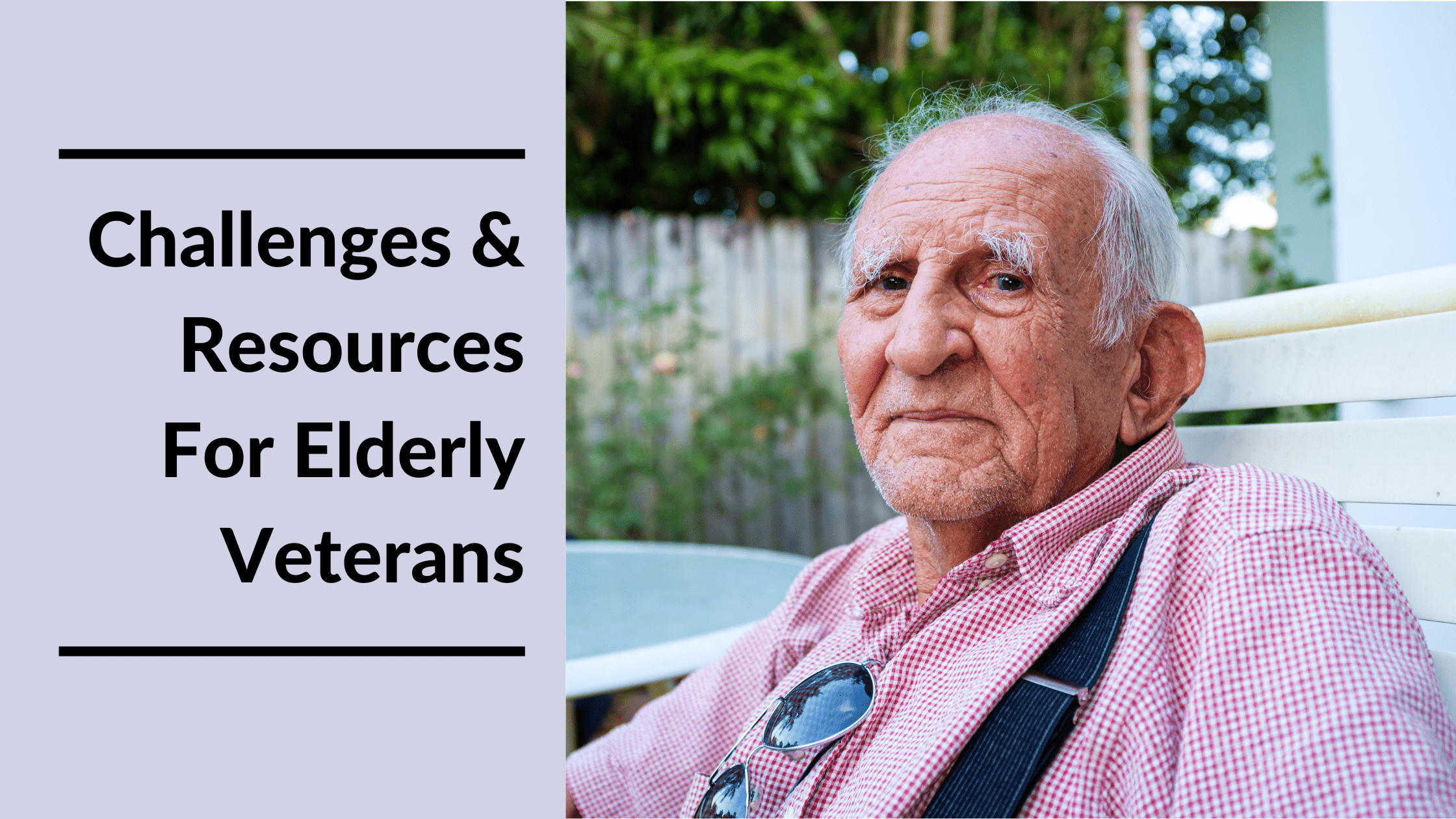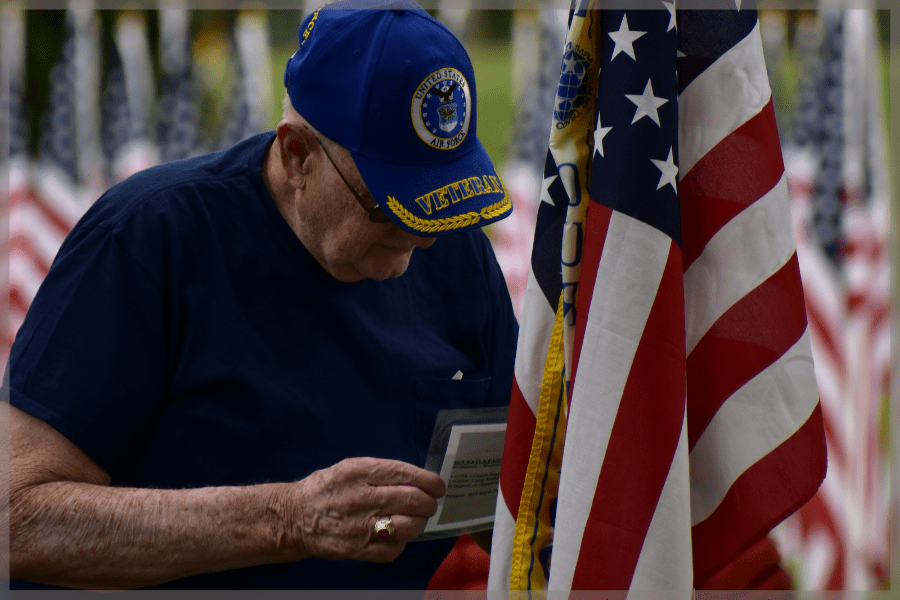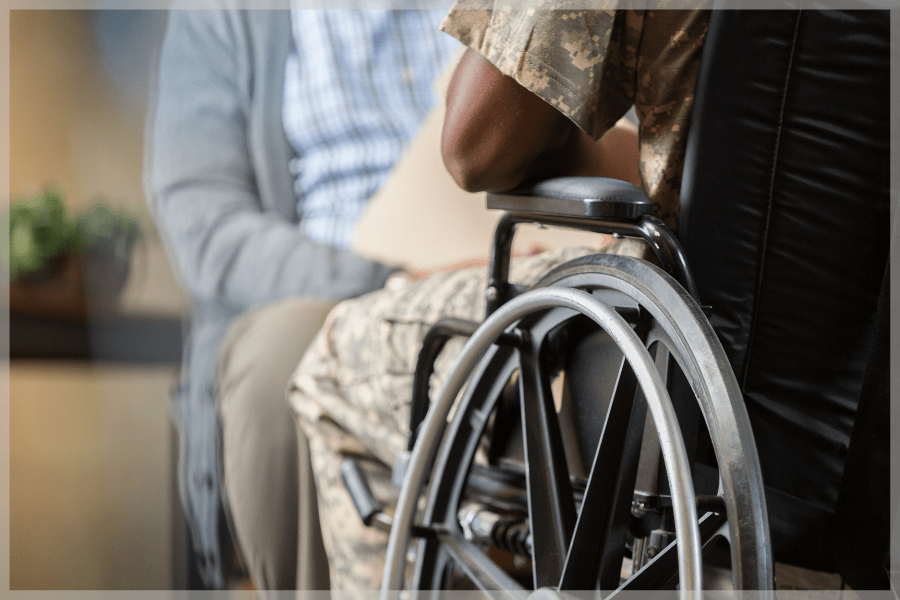
Elderly veterans face unique circumstances. They have higher incomes but fewer financial safety nets. They also report more health problems than their civilian counterparts. Understanding this group is key to meeting their needs. Keep reading to learn more.
Updated November 22, 2022
Recognizing Elderly Veterans' Unique Needs
According to the National Center for Veterans Analysis and Statistics, the country’s veteran population is “declining in number” and “becoming more evenly distributed in age.” Even so, data from the Department of Veterans Affairs (VA) shows that veterans 65 and older make up 46% of the total population.
Elderly veterans face a unique set of circumstances. Although they have higher incomes, they report fewer financial safety nets such as savings or home equity. They also experience more health problems than their civilian counterparts.
Understanding this population is essential to ensure their needs can be met in retirement.
Veterans Day Honors Veterans Of Every Age
Armistice Day was established on November 11, 1919, to mark the first anniversary of the end of WWI. In 1926, Congress passed a resolution to make Veterans Day an annual observance. In 1938, November 11 became the official designated holiday to honor all veterans, both living and those who have passed.
Challenges Facing Elderly Veterans
Aging adults must contend with the problems that arise with growing older. But senior veterans often face additional struggles in several areas of life. Pay attention to warning signs or anything else that indicates an elder requires extra support.
Higher Risk Of Isolation And Loneliness
Senior social isolation is a serious issue for many older adults. However, the risk is particularly high for elderly veterans, with 56.9% experiencing loneliness “at least some of the time.”
Like their civilian counterparts, elderly veterans encounter many shifts later in life. Unfortunately, these changes, which range from diminished physical abilities to cognitive decline, can make them more predisposed to loneliness and isolation. Besides these, elderly veterans face additional challenges that can exasperate this risk, such as:
- Stress
- Depression
- Past traumas
- Post-traumatic stress disorder

Many older veterans also live alone, with the VA finding that over 1 in 5 veterans live alone. Between this and the population’s growing longevity, elderly veterans (particularly those who live alone) will need more support from the VA, caregivers, families, and communities.
Lower Physical And Mental Health
Disabilities can drastically impact an older adult’s quality of life. For example, limited mobility affects independence, self-esteem, and many other areas of life. In addition, many people with disabilities live in rural areas or places with poor or inadequate public transportation. Ultimately, all these problems exasperate loneliness and isolation, which further diminishes physical and mental health.
Numerous studies show that elderly veterans, particularly VA patients, are more likely to develop chronic conditions affecting their mental and physical health.
For example, when comparing elderly veterans and civilians, the National Council on Aging (NCOA) found:
- 31% of veterans rate their health as fair or poor (versus 26% of elderly civilians)
- 81% have two or more chronic conditions (versus 70%)
- 57% have at least three or more chronic diseases (versus 44%)
- 25% struggle with at least one Activity of Daily Living (ADL) (versus 17%)
- 30% struggle with Instrumental Activities of Daily Living (versus 21%)
Several factors, like transportation and distance, can hinder seniors’ ability to access treatment from the VA medical system. Other issues, like mental health services or stigma, can also deter older veterans from making changes to improve their health.
Financial Insecurity
Social security, Medicare, and pension benefits go a long way to supporting elderly veterans. NCOA found that elderly veterans report more income than the general population (likely due to pension benefits).
But even with veteran benefits, many seniors who have served live on fixed incomes. According to 2021 data from the US Census Bureau, 543,434 veterans 65 and older lived below the poverty level – more than any age group.
Older veterans are less likely to have fewer savings and less home equity to fall back on in an emergency. Likewise, elderly veterans with disabilities report even higher rates of poverty and financial insecurity.
As the senior population climbs, there will be a need for better housing, health services, and caregiver support. In addition, the issues facing many of today’s elderly veterans will have a lasting impact on them and the whole country. That is why these concerns must be addressed sooner rather than later.
Resources For Elderly Veterans
The VA has many resources for older veterans to receive appropriate care.

Aid And Attendance
Some senior veterans may be eligible for an additional monthly amount, even if they already receive a VA Pension benefit.
The Aid and Attendance, or Housebound Benefit, is an extra allowance in addition to the monthly pension benefit. Eligible veterans can receive this benefit if they:
- Require assistance with ADLs, such as bathing, eating, dressing, or
- Are bedridden or spend most of the day in bed due to an illness, or
- Live in a nursing home due to a disability, or
- Have poor eyesight.
Of course, the amount eligible recipients receive will vary depending on their financial situation and needs. However, this program can provide $2,170 or more, significantly easing the cost of assisted living, caregiving, or other types of senior care.
Long-Term Care Services
The VA offers several options for long-term care services to all qualifying veterans.
The Services at Home and in the Community is available to all enrolled veterans with a “clinical need for it.” This program offers services such as:
- Respite care
- Adult day health care
- Skilled home healthcare
- Homemaker and Home Health Aid (HHA) care
- An assessment to determine care needs and form a care plan.
Residential Settings and Nursing Homes have different qualifying criteria depending on the facility. Unfortunately, the VA doesn’t offer financial aid for rooms at assisted living or adult family homes. However, veterans living in these settings may still receive additional benefits from the Services at Home and in the Community.
Community Living Center, or VA Nursing Home care, is available to eligible veterans who meet the VA’s specific service status, disability, and income requirements.
How To Support Elderly Veterans
In addition to the usual Veterans Day parades and poppy-wearing, there are many ways to show your support. Here are just a few:
Avoid Stereotypes
Remember, not all who have served feel a need to talk about it. If somebody wants to keep their experiences private, don’t push the issue. If you’re going to help someone, try not to do it in a way based on an assumption, such as placing flags in veterans’ yards without permission.
Be aware of your actions. Although you mean well, could they be seen as interfering or judgemental? And, of course, don’t take it personally or become defensive if a veteran asks you to refrain from doing something.
Help Elderly Veterans Tell Their Story
(With their permission, of course.)
What veterans tell is something that people can’t get from a textbook. But sadly, many have no one to listen to them. Some may feel like a burden or are afraid of offense. Or they have no one to listen to them. Others may think that their stories aren’t worth telling.
The Veterans History Project aims to change that by giving veterans a place to share their stories. To get started, download the kit to record your loved one’s history. StoryCorps is another option. This organization has permanent and mobile booths in cities across the country.
It doesn’t matter if you introduce the veteran in your life to one of these organizations or if you record their experiences yourself. What matters is helping them feel valued and remembered.
Remember Military Families
When reaching out to veterans, it’s crucial to remember their families. Deployments and homecomings are an adjustment, and upheaval is a part of life for military families who need support, too.
Many veterans and their families face hurdles due to depression, anxiety, and PTSD. So don’t forget to find ways to help support the families of servicemen and women. It can be as simple as offering to take the children to school, bringing a meal, or listening to them.
Visit Elderly Veterans
If you know a senior veteran who lives alone or in an aged care community, take time to visit not just on Veterans Day but any day of the year. Even if you don’t know someone who previously served, you can contact your local VA and learn about outreach programs in your area. One or two hours makes all the difference for those living alone. It is also an excellent reminder that they and their sacrifices matter.
Volunteer
Another way that you can directly help veterans is through volunteer work. There are numerous veteran organizations, and the VA has a list of available options, so contact them to learn more.
Choose something as short as a one-day project or find something long-term. Your time is your most valuable asset, so it’s one of the best ways to show you care.
MeetCaregivers Supports Elderly Veterans
Today, take a moment to give to someone who needs it. If you realize your parent or loved one needs additional help around the home, it may be time to hire a caregiver.
A professional caregiver can help with various needs, from routine care to transportation. Proper care can go a long way to improve your and your parent’s quality of life. Call 1 (888) 541-1136 or Find A Caregiver to get started.
Check our Blog for resources and tips for caregiving and aging in place.
- Allied Services Integrated Health System. (2022, January 14). In-Home Care: battling loneliness in Veterans. Retrieved November 18, 2022, from https://www.allied-services.org/news/2022/january/in-home-care-battling-loneliness-in-veterans/
- Amaral, E. F. L., Pollard, M. S., Mendelsohn, J., & Cefalu, M. (2018, May 3). Current and future demographics of the veteran population, 2014–2024. Current and Future Demographics of the Veteran Population, 2014–2024. Retrieved November 18, 2022, from https://muse.jhu.edu/article/692104
- Duffin, E. (2022, October 5). Poverty status of veterans in the United States in 2021, by age. Poverty status of U.S. veterans 2021, by age – Statista. Retrieved November 18, 2022, from https://www.statista.com/statistics/250310/poverty-status-of-us-veterans-by-age/#statisticContainer
- Farmer, C. M., Hosek, S. D., & Adamson, D. M. (n.d.). Balancing Demand and Supply for Veterans’ Health Care. Balancing Demand and Supply for Veterans’ Health Care | RAND. Retrieved November 18, 2022, from https://www.rand.org/pubs/periodicals/health-quarterly/issues/v6/n1/12.html
- Institute of Museum and Library Services (IMLS). (2017, March 31). Supporting Veterans and Military Families: Understanding The Community. Supporting Veterans and Military Families: Understanding. Retrieved November 18, 2022, from https://awsgov-prod2.imls.gov/sites/default/files/publications/documents/supporting-veterans-and-military-families-understanding.pdf
- Linscott, A. (2016, September 29). Common Issues Facing the Elderly Veteran Population. Retrieved November 18, 2022, from https://www.hillandponton.com/common-issues-facing-elderly-veteran-population/
- National Center for Veterans Analysis and Statistics. (2019, May 7). Veteran Population Infographic 2019. National Center for Veterans Analysis and Statistics. Retrieved November 18, 2022, from https://www.va.gov/vetdata/docs/Demographics/VetPop_Infographic_2019.pdf
- National Council On Aging. (2019, November 6). A Profile of Older U.S. Veterans. Understanding the Characteristics of Senior U.S. Veterans. Retrieved November 18, 2022, from https://www.ncoa.org/article/a-profile-of-older-us-veterans
- Straus, E., Norman, S. B., Tripp, J. C., Tsai, J., Sippel, L. M., Jeste, D. V., Southwick, S. M., & Pietrzak, R. H. (2021, July 21). Behavioral Epidemic of Loneliness in Older U.S. Military Veterans: Results From the 2019-2020 National Health and Resilience in Veterans Study. Behavioral Epidemic of Loneliness in Older U.S. Military Veterans: Results From the 2019-2020 National Health and Resilience in Veterans Study – PubMed. Retrieved November 18, 2022, from https://pubmed.ncbi.nlm.nih.gov/34417085/
- United States Census Bureau. (2020, June 2). Census Bureau Releases New Report on Veterans. Retrieved November 18, 2022, from https://www.census.gov/newsroom/press-releases/2020/veterans-report.html
- Veterans Affairs. (2019, June 20). Geriatrics and Extended Care. VA Long Term Care Services – Geriatrics and Extended Care. Retrieved November 18, 2022, from https://www.va.gov/geriatrics/pages/VA_Long_Term_Care_Services.asp
- Veterans Affairs. (2022, October 12). VA Aid and Attendance benefits and Housebound allowance. VA Aid And Attendance Benefits And Housebound Allowance | Veterans Affairs. Retrieved November 18, 2022, from https://www.va.gov/pension/aid-attendance-housebound/
- Veterans Benefits Administration, V. B. A. (28AD, September 20). Elderly Veterans – Veterans. Elderly Veterans – Veterans Benefits Administration. Retrieved November 18, 2022, from https://www.benefits.va.gov/persona/veteran-elderly.asp
